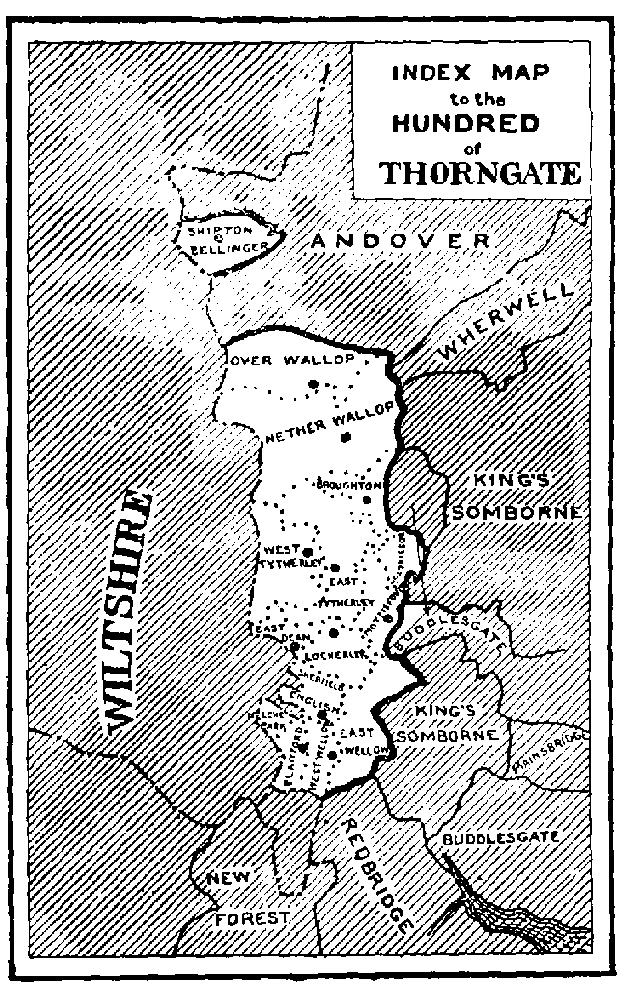Pages 489-490
A History of the County of Hampshire: Volume 4. Originally published by Victoria County History, London, 1911.
This free content was digitised by double rekeying. All rights reserved.
THE HUNDRED OF THORNGATE
Containing the Parishes of Bossington; Broughton; Frenchmoor Tithing; East Dean; Lockerley; Mottisfont; Sherfiels English; Shipton Bellinger; East Tytherley; West Tytherely; Buckholt (extra-par.); Nether Wallop; Over Wallop; East Wellow; Dunwood (extra-par.); Embley Tithing (fn. 1); Melchet Park; Plaitford (fn. 2)
The above list, with the addition of Wigley in Copythorne parish and Cadnam partly in Netley Marsh and partly in Minstead, and part of West Dean (co. Wilts.), represents the extent of the hundred as given in the Population Returns of 1831. Since that date the area of the hundred has been much altered. Between 1831 and 1841 Shipton Bellinger was removed to the upper half of Andover Hundred. At the same time Michelmersh, Leckford, Longstock and Stockbridge were transferred to this hundred, the first-named from Buddlesgate Hundred and the other three from King's Somborne Hundred. (fn. 3)

Index Map to the Hundred of Thorngate
At the time of the Domesday Survey the hundred was known as the hundred of Broughton ('Brocton') and comprised the modern parishes of Bossington, Broughton, East Dean, Lockerley, Mottisfont, Sherfield English, Shipton Bellinger, East and West Tytherley, Nether and Over Wallop, and East Wellow, and part of South Tidworth now in Andover Hundred. (fn. 4) 'Hotlop' and perhaps 'Chingescamp' were also in this hundred. (fn. 5) 'Hotlop' perhaps represents Oakley in the parish of Mottisfont. 'Chingescamp' has not been identified at present, but it is possible that this estate was in Barton Stacey Hundred. (fn. 6)
The hundred was assessed at about 105 hides at the time of Edward the Confessor, and at less than half that amount at the time of the Domesday Survey, the large difference in the assessment being mainly due to the fact that two large estates in Wallop assessed at 22 hides and 17 hides respectively at the time of King Edward were Crown property in 1086. (fn. 7) The hundred, which had taken its present name by the beginning of the 13th century, (fn. 8) continued to include a portion of South Tidworth as late at least as the 15th century. (fn. 9)
In 1651 the courts leet and law-day of the hundred were held, one about Hocktide, and the other in October about St. Martin's Day at Buckholt Hill, but the sheriff's tourn had been discontinued for some years. (fn. 10) The hundred has always belonged to the Crown. (fn. 11)


